| Your browser is not supported. | ||
|
Please browse our site using any of the following options:
| ||
Targeting Yellowbelly In Dams
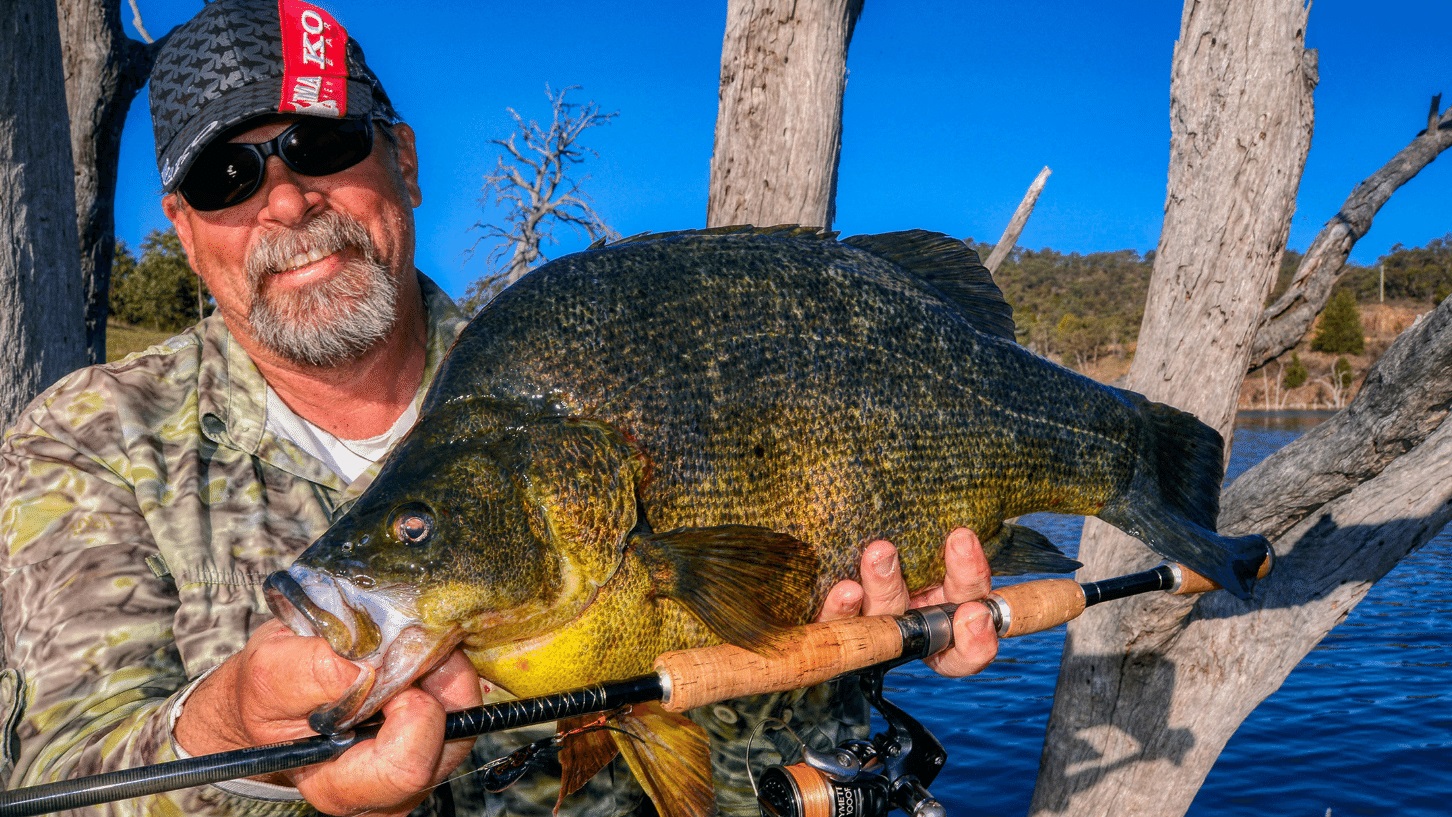
Spring is the prime season for chasing big golden perch or yellowbelly in our dams, and that's one of Starlo's favourite pursuits at this time of year. Here he dives into the latest and greatest lure fishing techniques for catching these popular inland natives.
My very first experiences with impoundment-dwelling yellowbelly took place at Copeton Dam, in the New England region of NSW, way back in the early 1980s. I was there as the guest of freshwater guru, Rob Smith, chasing yellowbelly along the edge of a 100% full dam.
We were casting-and-cranking Storm Hot 'N Tot hard-bodied deep divers from Rob's boat, and doing reasonably well on some chunky spring goldens, but Rob was consistently kicking my butt by a factor of about three to one… until I accidentally discovered a subtle retrieve trick that completely turned it all around for me.
Those big-bibbed lures dove deeper and deeper as we pulled them away from the bank and its fringing weed bed until they arrived directly under the boat. Here, they would actually swim past a point where the line was perpendicular before turning and suddenly climbing up out of the depths.
A lot of our strikes were coming at that exact moment: when the lure turned back on itself and began to rise. However, on one retrieve - just a few cranks before my lure reached that critical flip-around-and-climb point - a sticky little bush fly managed to crawl in behind the lens of my sunglasses. I stopped cranking and raised my hand to deal with the pesky little intruder… and the rod was almost ripped from my grasp by a fired-up golden!
From that cast on, I began incorporating a deliberate pause into every retrieve just prior to the lure's turn-around point - and that's exactly how, when and where I hooked most of my fish for the rest of the trip.
Little things like this really can make a big difference in fishing, and across the four decades since, I've seen many, many examples of tiny nuances in presentation resulting in sometimes dramatic increases in strike rates. Interestingly, a good number of those lessons have involved golden perch.
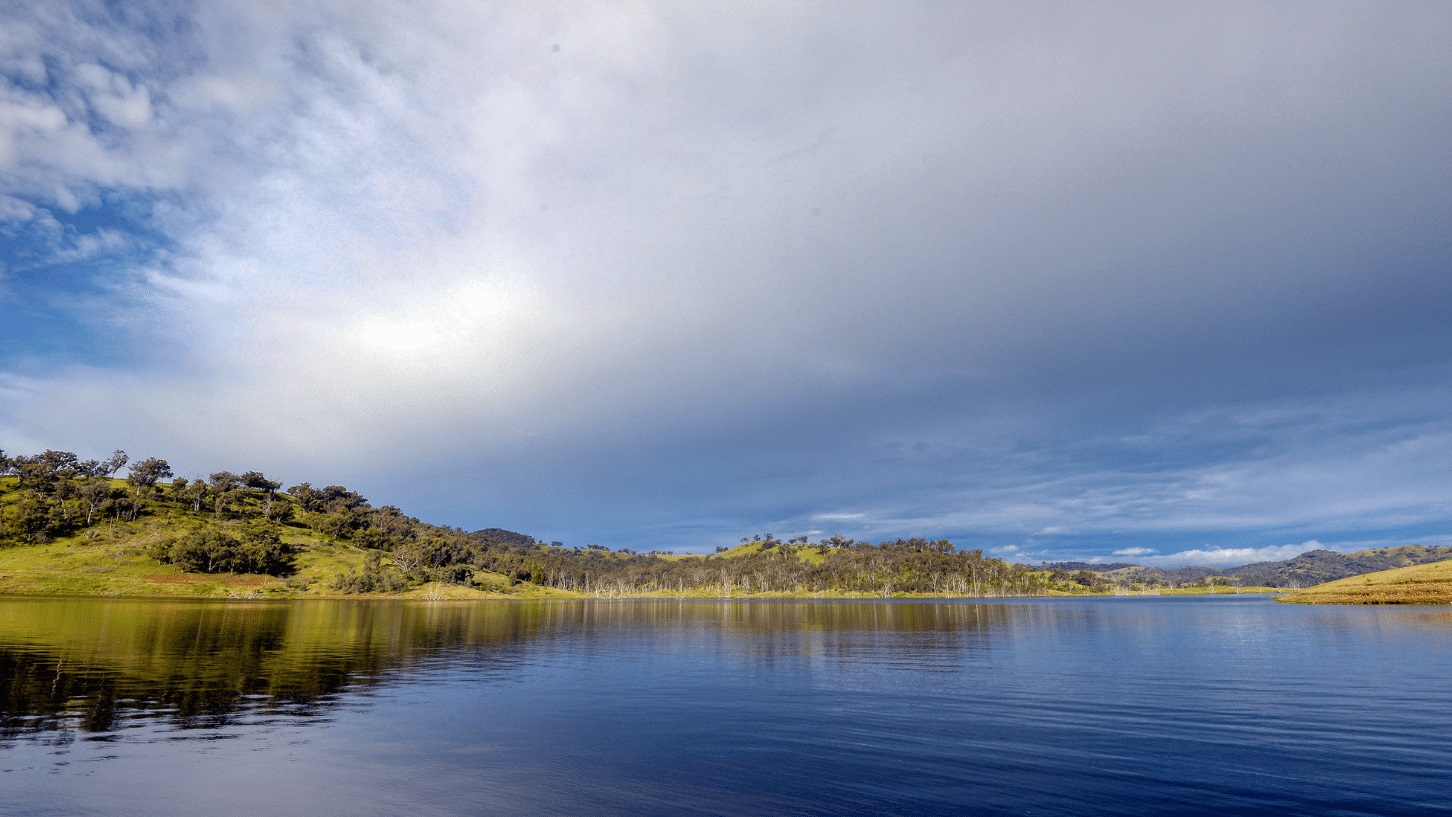
The yellowbelly football factory
It wouldn't be stretching the truth to nominate Lake Windamere, on the Cudgegong River system, as Australia's premier still-water venue for trophy golden perch. I would hate to guess just how many tens of thousands of big yellowbelly this amazingly consistent dam has produced over the past 35 years or so, but it's an awful lot!
Fish over 50cm are common there, and football-fat specimens in excess of 60cm are taken almost every day, especially between September and April. The biggest nudge or even top 65cm and can weigh 8kg or more. Those are massive yellowbelly in anyone's language.
Despite having fluctuated between full (through the late '80s and early to mid-'90s) to less than 20% of its potential capacity in the worst drought years of the new millennium's first decade, Windamere has gone right on producing trophy goldens, massive silver perch and the odd cracker of a Murray cod, year in and year out. There aren't too many dams you can say that about.
Today, Windamere continues to attract keen anglers from far and wide and hosts several major tournaments and competitions every season, including the Golden Classic I established there in 1992. But the fishing there has definitely changed over those decades…
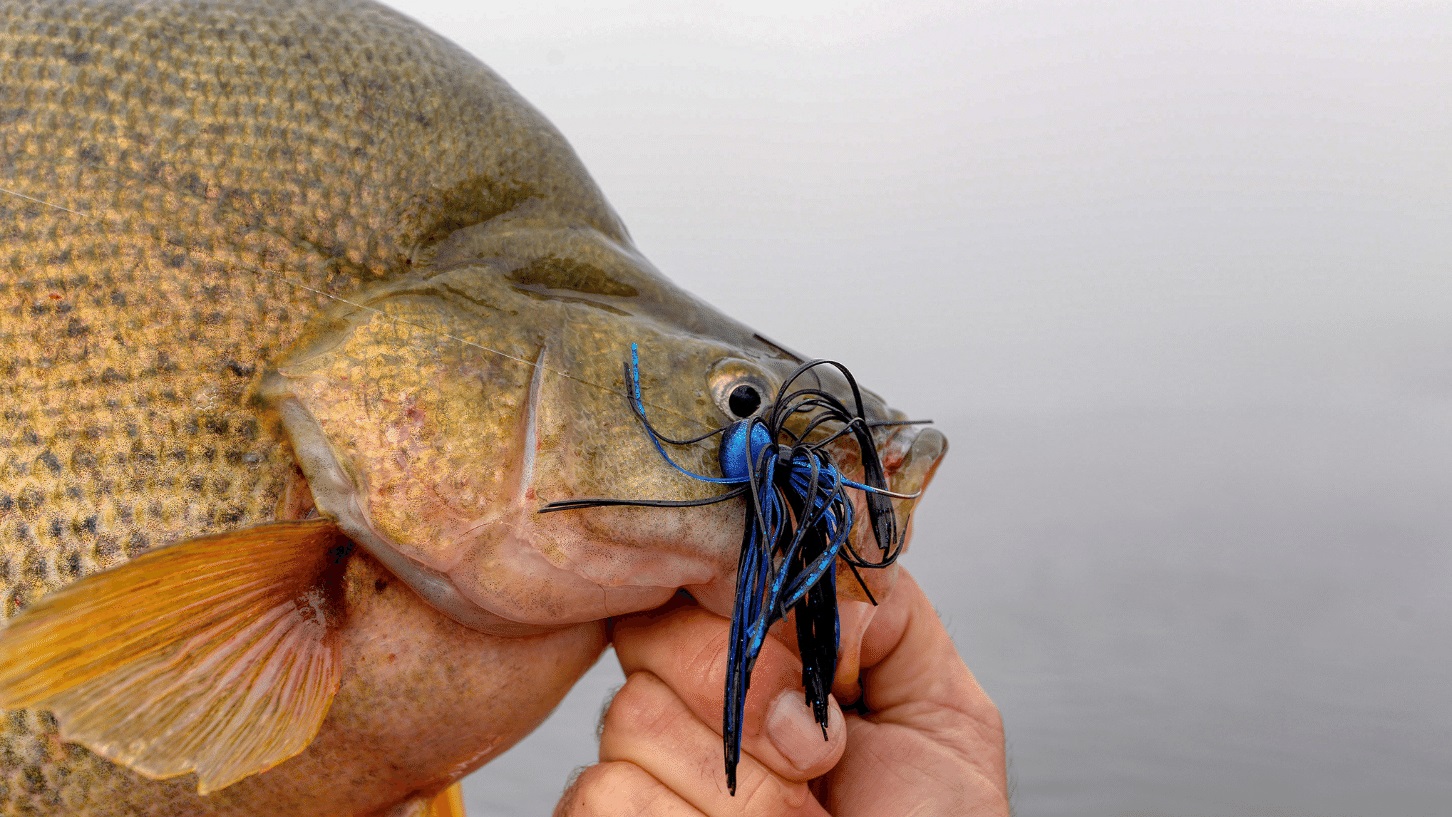
A process of evolution
In our early days at Windamere the vast majority of yellowbelly were taken by casting floating/diving plugs (especially those deadly Deceptions) from the bank. Very few of us fished from our boats.
Slowly, this pattern began to change as anglers began casting and trolling from their boats. This was greatly facilitated, of course, by the widespread uptake of bow-mounted electric motors through the latter part of the 1990s, along with the increasing sophistication (and affordability) of decent depth sounders.
By the early years of the new millennium, the pace of change had really picked up. The tournament brigade introduced soft plastics, spinnerbaits, metal blades and those revolutionary Jackall lipless crankbaits that had already been turning the impoundment bass world on its head for several years. Later still came soft "hybrid" vibes like the amazingly effective Jackall Masks and skirted or fur-dressed jigs.
Sophisticated spinning tackle was by now becoming much more common than baitcasters, and both line and leader sizes were diminishing as the 'finesse' approach gradually caught on. I'm quietly proud of having played a small role in the dissemination of these concepts, which dramatically improved most anglers' catch rates, at Windamere and well beyond its shores, at yellowbelly dams across the fish's broad range.
Results definitely improved as these new strategies were adopted. We went from expecting to catch two, three or four fish a session while casting plugs from the bank at the best times of year to regular double-figure tallies while jigging the 3-8m depth band outside the weed beds from our boats with blades and vibes rigged on bream-weight gear.
With the aid of these modern approaches we also expanded the acknowledged 'season', regularly catching Windamere's goldens right through summer and well into autumn or even beyond by using these modern techniques and tools.
It goes without saying (or should) that the old techniques continue to catch fish, and still have their occasional day in the sun, but across the board and over the longer run, if you're not gently jigging hard and soft vibes or blades, bouncing plastics, crawling skirted jigs over the bottom or 'vertically grubbing' drowned trees - all from a boat equipped with a bow-mounted electric motor and a decent depth sounder (ideally one with side-scan imaging) - you're really not in the race any more.
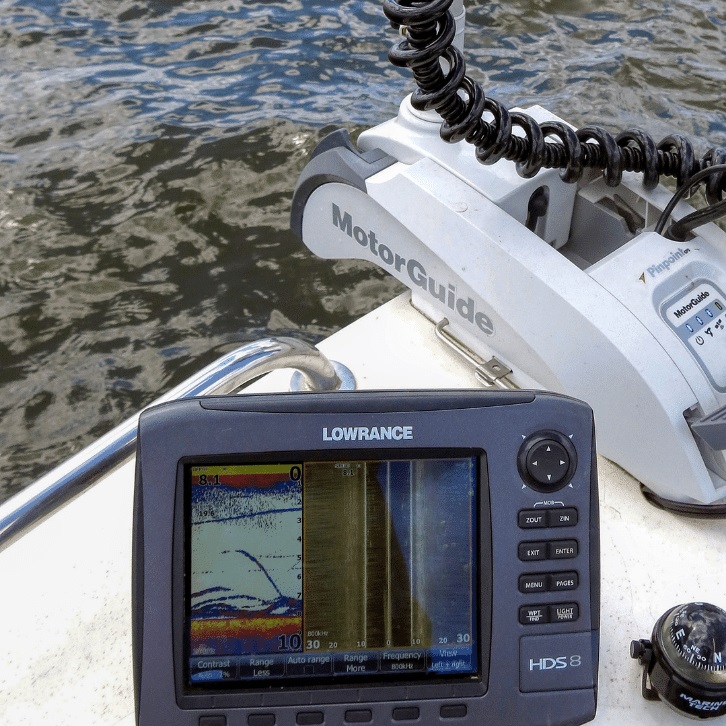
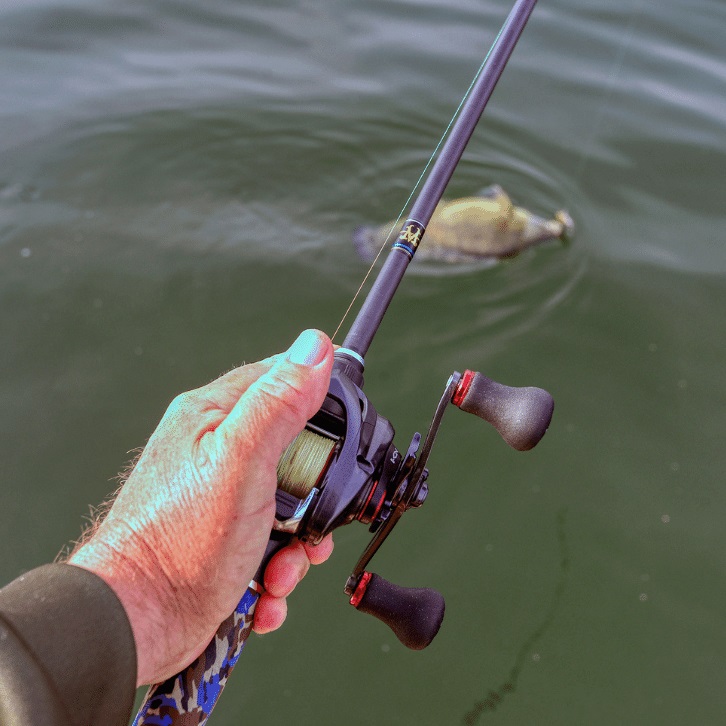
The latest twists
Aussie fishers are a highly inventive mob. Many of us enjoy coming up with new angles and subtle but often important tweaks on time-proven methods. Sometimes these little twists can put us ahead of the pack… at least for a while. This has very much been the case with the ongoing quest for big yellowbelly in our man-made dams.
The simple fact is that angling pressure on stocks of these fish is ramping up significantly every year. Bays, arms and points in big dams like Eildon, Eppalock, Burrinjuck, Wyangala, Burrendong, Windamere, Copeton or Boondooma that may have barely seen a boat or two in any given week 20 years ago are now fished regularly… and hard.
Goldens and other fish that live in these waters get to see lots of baits, lures and flies, and some of them are caught (and often released) in the process. The net effect of all this pressure is an increasingly cagey and cautious fish population. While I'm leery of using anthropomorphic terms like 'educated' or 'smart' when referring to fish, there's simply no denying the self-evident truth that they are capable of wising-up to popular techniques and becoming much better at basic 'hook avoidance behavior'. Put simply, they become harder to catch.
Anglers do their best to overcome the diminishing returns associated with heavily pressured fisheries by employing better and better electronics, finer lines and leaders and more life-like lures and flies. Subtle nuances in the way those lures are manipulated can also make a big difference to our catch rates.
All of the time-proven techniques will definitely still catch yellowbelly in our dams, but there are folks out there adding subtle twists to these basic approaches that can and do make a noticeable difference to their catch rates. These are often the same people who end up on the winners' podium at tournaments and competitions.
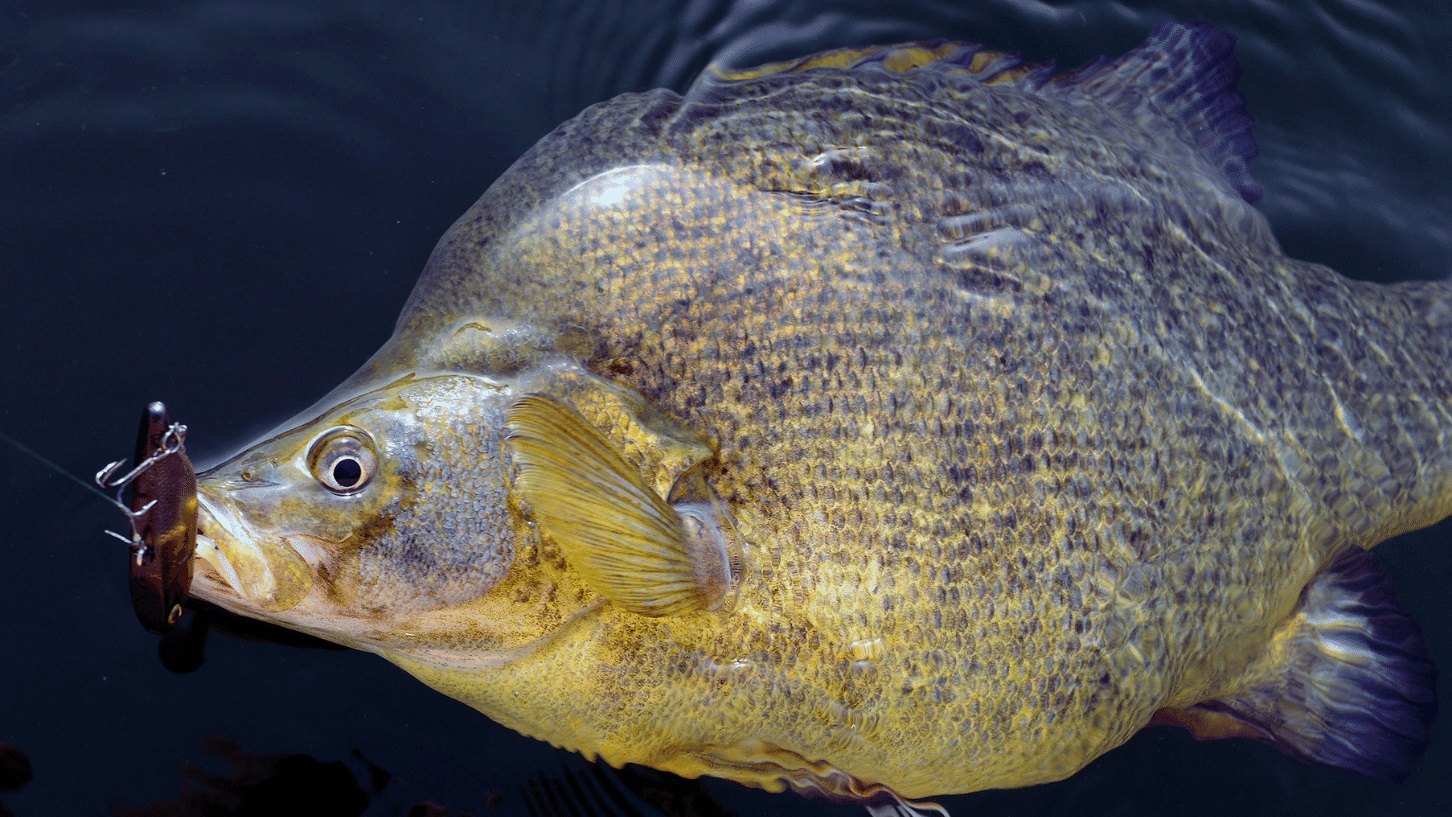
Cracking patterns to land more yellowbelly
Running an eye over the list of champion teams and their members for a quarter century of the Lake Windamere Golden Classic quickly reveals a series of patterns.
Certain names tend to pop up several times in quick succession, often across runs of a few years. This generally indicates the work of savvy anglers who've cracked new methods that are capable of putting them ahead of the pack for a time. We had Kneller and Mayberry in the early days, then Hall and Morris, then Stewart, Burbidge and Cooke, and later Clancy, Bunting and Tutton.
In more recent years, Collison, McLure and Miles have dominated, while consistently successful guys like golden perch guru, Jamie Hardman, have also stamped their mark on the fishery, with regular podium finishes. These switched-on, highly innovative anglers are always looking for that little edge that can make a big difference… and they often find it.
In 2018, fishing writer Kevin Savvas penned a great piece detailing some of the presentation techniques he'd been taught by experts like Jamie Hardman.
Some of the techniques shown to Kevin Savvas involved faster and somewhat more aggressive retrieves with metal blades and both hard and soft vibes than the subtle lift-drop-lift more commonly used by those seeking yellowbelly. Others were at the dead slow end of the scale.
Savvas also described a crossover between a straight retrieve and what he calls 'tapping the slack', which is a form of lure manipulation commonly used by barra anglers to make a hard-bodied lure 'dance' and dart erratically without moving too far.
It's achieved by dropping the rod tip towards the lure momentarily to create semi-slack line, then 'popping' or twitching the rod tip sharply against that semi-slack line, stopping just as everything comes tight and before the lure moves too far. If repeated in a continuous series of short, sharp twitches, this can really bring a lure to life. Building in an occasional pause ensures that the lure also stays in regular contact with the lake bed.
Savvas and crew achieved this action with their rods angled up at around 10 o'clock (which works well on spinning tackle), but it can also be done with a low rod angle, and this is often more comfortable if using a baitcaster.
Kevin Savvas christened this distinctive retrieve 'The Hardman Shuffle', which seems apt, considering the outstanding results achieved by the Hardman clan in many yellowbelly competitions using this and other methods.
Another presentation Savvas detailed in that informative article was what he called the 'churn-and-burn'. After casting out and allowing the lure to sink to the lake bed, it was retrieved with five or six fairly brisk cranks of the reel handle, followed by a distinct stop and pause to allow it to sink and touch the bottom again.
This pattern was repeated all the way back to the boat or bank, with most hits coming on that all-important pause.
Shake and bake
Another angler who's been working with subtle twists to retrieve styles is my good mate Glen Stewart's son, Murray. In a wonderful podcast interview with Rhys Creed, Murray outlined a 'shake-and-shuffle' retrieve that basically combines a slow roll of the reel's handle with a constant shaking of the rod tip, interspersed with the occasional pause. On the right day this shaking strategy is also absolutely deadly on goldens.
By the time of the Lake Windamere Golden Classic in mid-October, 2019, this slow-cranking, shaking, pausing presentation had become the 'go-to' strategy for many successful competitors, and was widely being referred to as the 'shake-and-bake'.
It was mostly being employed with slightly larger soft vibes like Transams and Zerek Fish Traps, but also works with smaller soft vibes like the Jackall Masks, as well as hard vibes and even metal blades.
In almost all cases these lures are either fitted or retro-fitted with small, sticky-sharp assist hooks. These hooks reduce fouling from weed and slime, while also being very effective at pinning cautiously-biting fish. They make a big difference.
Along with some of the other approaches described here, the 'shake-and-bake' produces an action that is no doubt an excellent imitation of a yabby or large shrimp shuffling and foraging through the sediment of the lake bed, so it's little wonder they work so well.
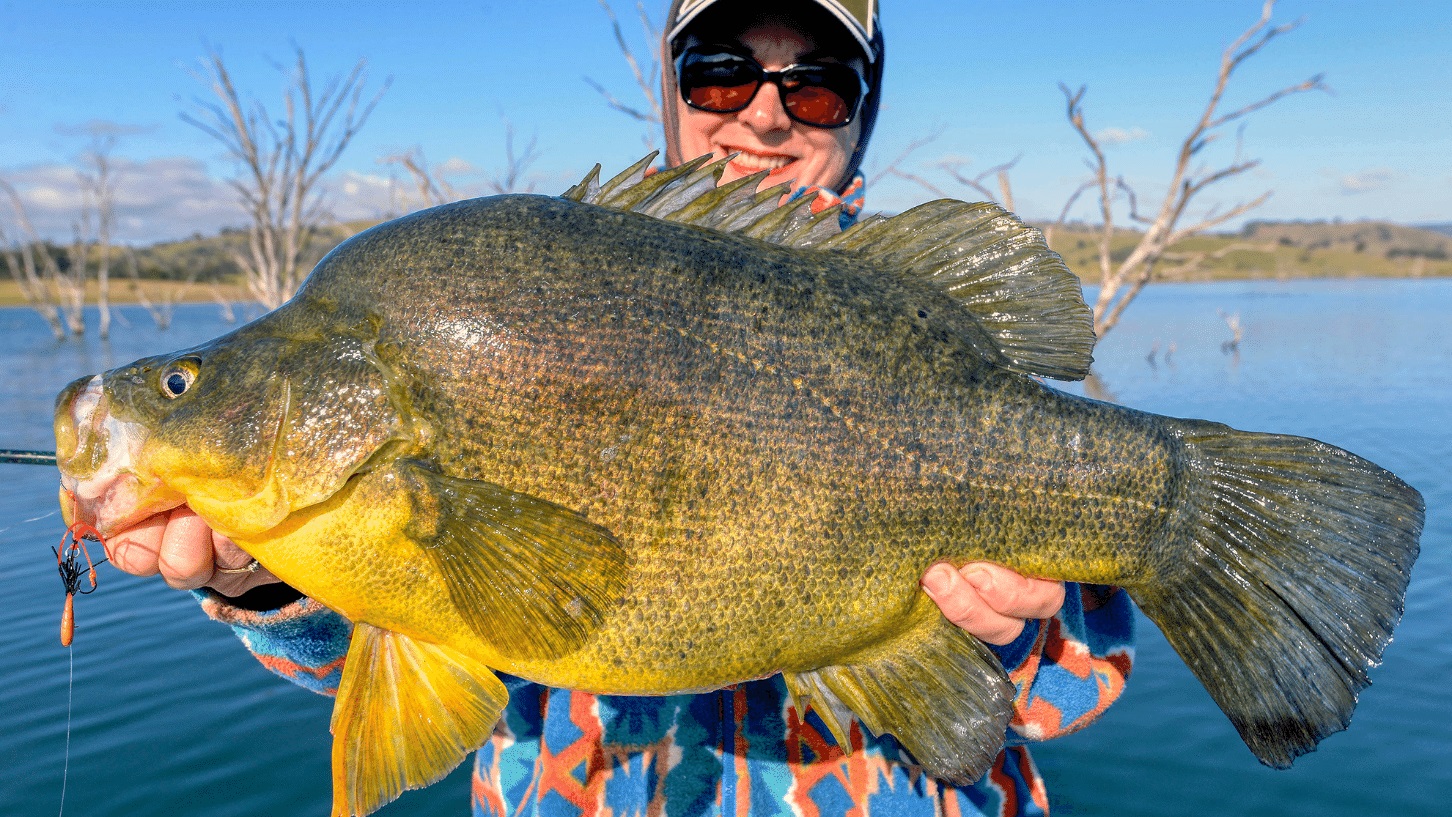
A big deal
Nuances and subtle alterations to retrieves such as those described in this article might not sound like such a big deal, but on the right day they can spell the difference between almost constant (or at least regular) action and the dreaded donut.
The take-away message from all of these twists on conventional lure presentations is that you should never, ever stop thinking, learning and experimenting. Seemingly tiny variations in the way you move your lure through the water can make an enormous difference to your overall results.
Furthermore, the effectiveness of these variations can shift from season to season, day to day, and even hour to hour and bay to bay. It really pays to mix it up and find out exactly what's pushing the fish's buttons at that precise moment in time.
Find your local Anaconda store and check out our extensive range of fishing gear for your next yellowbelly session.